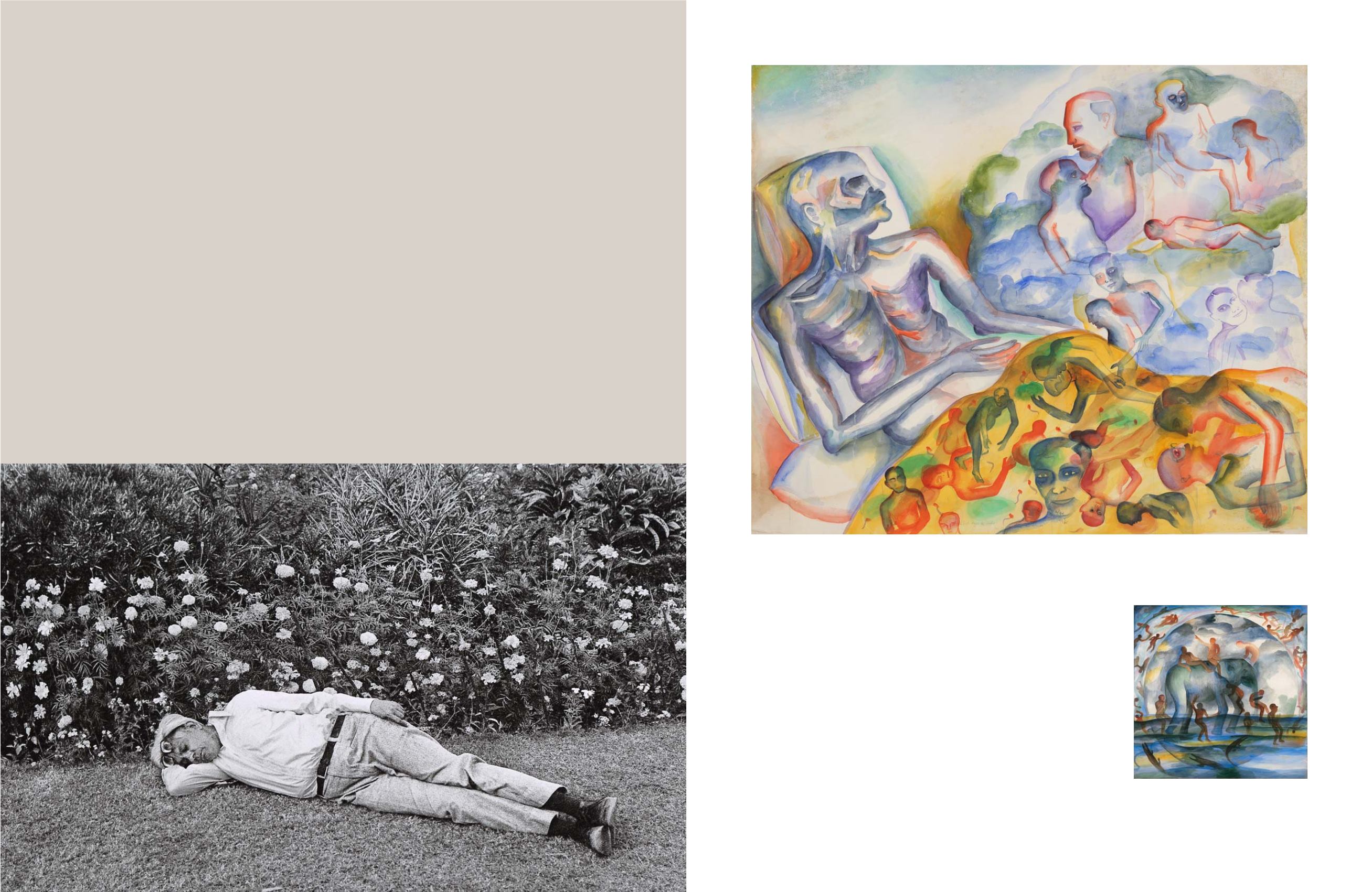

47
BHUPEN KHAKHAR
(1934 ‒ 2003)
His Last Days of Aids ‒ He Remembered His Friends
Signed twice and dated in Gujarati and inscribed 'his last
days of Aids ‒ he remembered his friends' (lower centre)
1998
Watercolour on paper
42.75 x 49 in (108.4 x 124.5 cm)
$ 93,750 ‒ 125,000
Rs 60,00,000 ‒ 80,00,000
PROVENANCE:
Acquired directly from the artist
Private Collection, Vadodara
Procession
, 1991
Saffronart, New Delhi, 10 September 2015, lot 32
Sold at INR 1.2 crores (USD 184,615)
Another narrative watercolour by Khakhar
EXHIBITED:
Remembering Bhupen
, Vadodara: Sarjan Art
Gallery, 8‒29 August 2015
PUBLISHED:
Remembering Bhupen
, Vadodara: Sarjan Art
Gallery, 2015 (illustrated, unpaginated)
Bhupen Khakhar’s art was based on personal as well as
political concerns, going against the grain of dominant
artistic practices of his time. He often positioned
himself as the subject in his paintings, and the present
lot, titled
His Last Days of Aids ‒ He Remembered
His Friends
is self explanatory. The gaunt and sickly
appearance of the central figure refers to the artist’s
own illnesses, to which he ultimately succumbed.
“Toward the end of his career as he fought against
prostate cancer he painted human bodies that were
violated by disease, war and violence, interspersed
with the experiences of tender, fearless calm.”
(Shivaji K Panikkar, “An Art Historian’s Appreciation,”
bhupenkhakharcollection.com, online)
During his last moments on the death‒bed, old friends
and lovers reappear, creating a hallucinatory, memoir‒
like scene in which he revisits his life. These “spaces filled
with figures, meticulous descriptions, bright colours and
a complex spatial arrangement,” (Enrique Juncosa, “The
Integrative Art of Bhupen Khakhar,” Timothy Hyman,
Enrique Juncosa et al.,
Bhupen Khakhar: A Retrospective
,
Mumbai: NGMA and The Fine Art Resource, 2003, p. 12)
are typical of his style, whichwas based on vignettes within
a narrative structure. Khakhar was also influenced by
Buddhist culture and imagery which he encountered on a
visit to Sri Lanka. His works thereafter often incorporated
Buddhist imagery, and the central figure in this lot may
allude to the image of the emaciated Buddha overcoming
the suffering of the human body to attain salvation.
Bhupen Khakhar
© Jyoti Bhatt
56
57


















